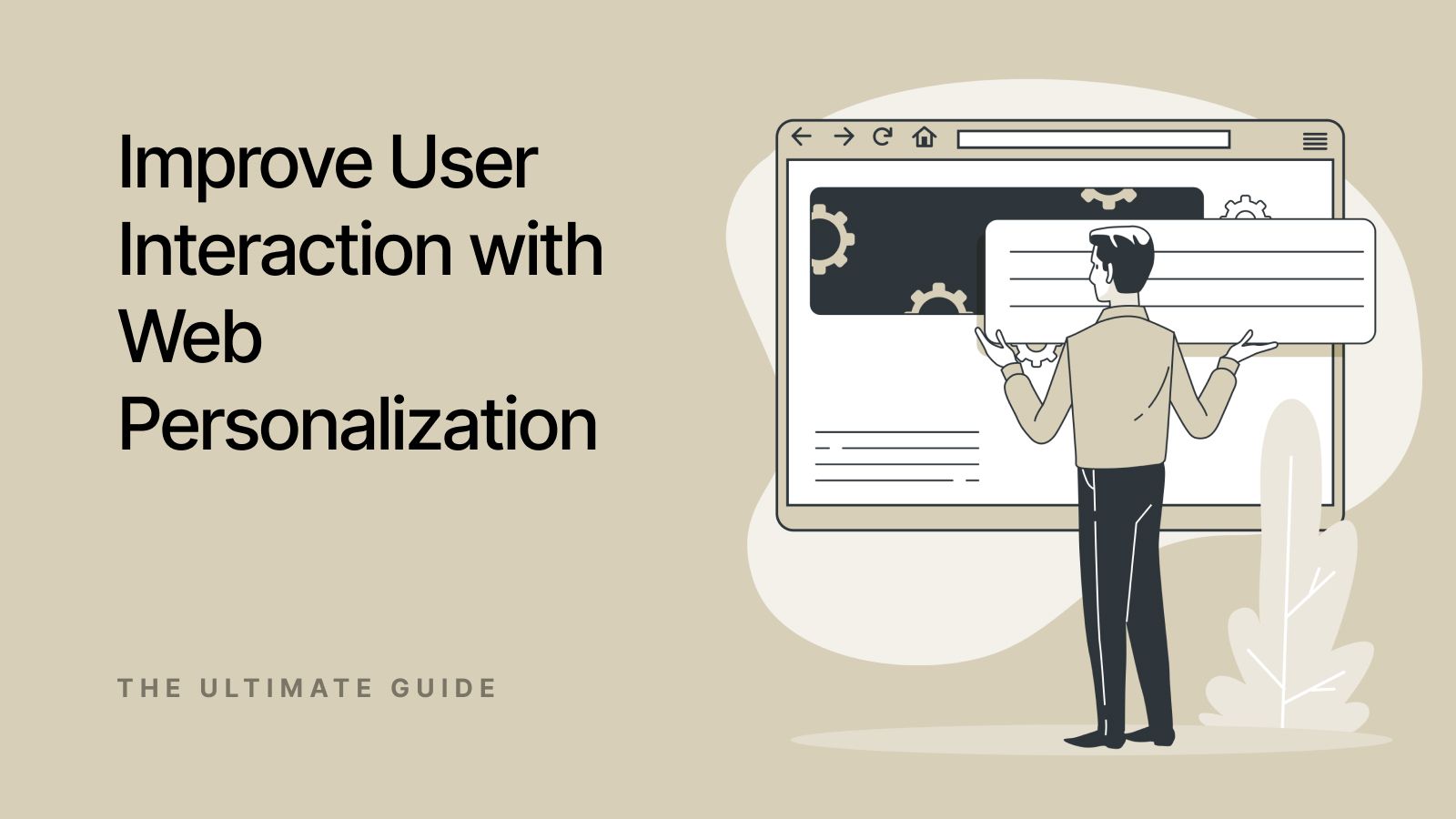One of the most effective ways to capture the attention and loyalty of your target audience is through website personalization. By tailoring content, offers, and interactions to each visitor, you can deliver relevant and valuable experiences that build trust and customer satisfaction.
The Importance of Personalization in Driving Engagement
Personalization on websites is a strategy that uses data about user behavior, preferences, and interaction history to create a unique interface and content for each visitor. Here is why personalization is so important:
It increases customer satisfaction and loyalty. When customers see that a brand recognizes their needs and wants, they are likelier to remain loyal and interact with the company again.
Increases conversions and sales. Up to 49% of consumers become repeat customers when a brand provides a personalized experience.
Increases brand differentiation. Personalization helps create a brand's unique personality and reputation, which sets it apart from its competitors.
As a result, personalization allows you to connect more closely with their customers.
Whether you're leveraging website personalization or tools like appointment scheduling software for small business, these strategies help to tailor the customer experience, making each interaction more meaningful.
Leveraging Data for Personalization
According to Asaf Darash, collecting and analyzing data about user's behavior on a website is critical to dynamically personalizing content to their interests in real time. The sources of such data are varied:
Web analytics provides information about visitor behavior on the site, popular pages, and conversion rates.
Customer feedback. Reviews, surveys, and other feedback forms reveal customer preferences and pain points.
Customer relationship management (CRM) system data: interaction histories, demographics, purchase histories.
Analyzing social media activity can provide valuable insights into audience interests and habits.
Collecting and analyzing this data allows you to build a comprehensive view of your customers and develop appropriate personalization strategies.
Strategies and Tools for Personalizing Web Pages
Here are some common strategies and tools that can help you implement personalization.
Audience segmentation
Dividing the entire audience into smaller groups based on demographic, behavioral, or psychographic criteria. This allows content to be tailored to each segment.
Dynamic content
Content management systems (CMS) and personalization tools allow you to serve different content to different visitors or sessions of the same user based on the data you collect.
Personalized recommendations
Machine learning algorithms can analyze browsing and purchase histories to create relevant recommendations for products and services.
Personalized messages and pop-ups
You can use visitor data to tailor marketing offers, coupons, and welcome messages to visitors' preferences.
Search engine optimization
You can analyze user behavior to improve internal search results and recommend the most relevant content.
Personalized user journey
Customize the order in which navigation and content appear based on each visitor's preferences and behavioral patterns. By combining these strategies and tools, you can create a truly personalized experience for each user on your site.
Finding the Balance: Personalization and Privacy
When implementing personalization strategies, it's essential to keep customer privacy in mind. Here are some recommendations:
- Comply with applicable privacy laws, such as GDPR and CCPA.
- Make the data collection and use process transparent to customers. Obtain explicit consent.
- Give customers control over what data they are willing to share.
- Never use customers' personal information without their knowledge and consent.
- Don't use intrusive or annoying personalized advertising campaigns.
By following these guidelines, you can balance providing a personalized experience with maintaining customer trust.
Solving Problems and Overcoming Barriers
Despite the many benefits of website personalization, there are several challenges and obstacles to overcome:
Data collection and processing. Effective personalization requires large amounts of accurate and relevant data from various sources. You need potent systems to collect, integrate, and process this data.
Data storage and security. Following privacy regulations, collected customer data must be stored securely and protected from loss and unauthorized access.
Scalability and performance. As customer bases and data volumes grow, personalization algorithms require more processing power to maintain high processing speeds.
Management and updates. Personalization models and strategies must be constantly tested, evaluated, and updated to stay relevant as consumer preferences change.
Integrating and improving usability audits helps reveal specific user needs, ensuring that personalized experiences remain intuitive and aligned with customer expectations.
Here are a few ways to overcome these obstacles:
Invest in robust data warehousing, CRM, and integration systems to consolidate disparate data sources.
Leverage cloud computing power and scalable machine learning technologies for dynamic personalization.
Develop a clear data management strategy, including backup, privacy, and security processes.
Regularly A/B tests and optimizes personalization algorithms based on engagement and conversion analytics.
Monitor the latest trends and best practices in website personalization and implement innovative solutions.
By addressing these challenges systematically, you can maximize the benefits of site personalization and deliver a unique user experience to your customers.
Bottom Line
Website personalization is a powerful tool for increasing customer engagement and loyalty, driving conversions, and differentiating a brand. By leveraging user behavior, preferences, and interaction data, you can create a uniquely relevant experience for each visitor.
Key personalization strategies include audience segmentation, dynamic content, personalized recommendations, personalized messaging, search optimization, and personalized user paths. However, a balance must be struck between personalization and customer privacy.
To successfully implement personalization, you must overcome the challenges of collecting, storing, and scaling data and ensure that algorithms are regularly tested and optimized. However, investing in advanced personalization technologies and strategies can strengthen your connection with customers and help you stay ahead of the competition in digital audience engagement.
